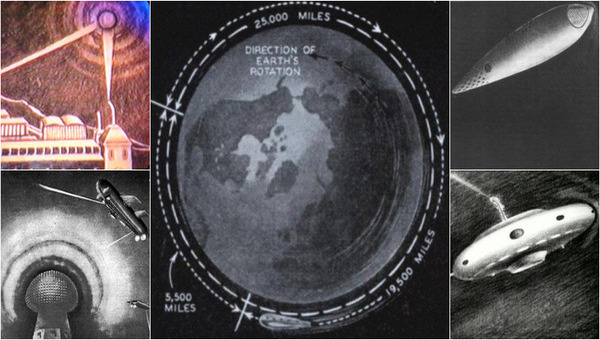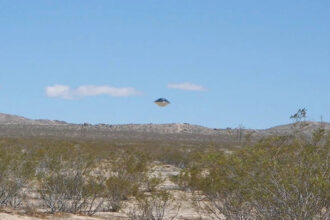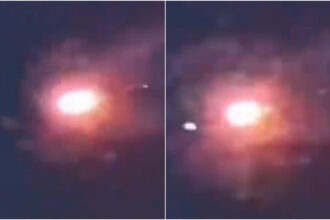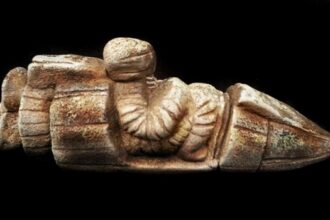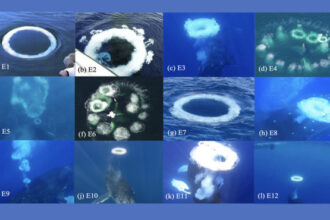Talking about Tesla is always a pleasure, whether for his brilliance, eccentricity, or the countless conspiratorial appeals surrounding this great mind who, although he died considered mad, while lucid dreamed, envisioned, theorized, and designed a highly developed world, both morally and technologically. And the best part: he sought to achieve all of it using his own ideas and knowledge in the fields of invention, engineering, and physics.
I’ll save time and skip the entire story everyone already knows about him, such as his nationality, the “war of currents,” wireless electricity, his seized files, and his solitary death in a hotel room.
It is often claimed that Tesla created a “flying saucer,” and there are countless websites, images, videos, and entertainment content circulating online making this assertion. It’s more than common to find images, drawings, illustrations, and sketches allegedly showing some of his projects in this regard.
The fact is that all these images attributed to him are not actually his work. They are merely “stories” told and retold, endlessly reposted on the internet until they become a supposed truth.
However, Tesla did indeed theorize — and not only theorize but also illustrate — many of his ideas for futuristic flying machines. Among them was one in the shape of a flying saucer, but not only that: there were also models shaped like “cigars” and others with different forms, in addition to cars, trains, and airships.
Tesla gave many interviews in which he described these aircraft, but, as far as records show, he never presented a sketch or technical engineering drawing showing how they would work. Perhaps such drawings exist, but they are most likely in the possession of the FBI, as they were the ones responsible for confiscating much of Tesla’s material after his death.
Yes, Tesla proposed an aircraft that looked almost exactly like a flying saucer. It was contained in documents at the Tesla Museum in Belgrade and was featured in the 1980 Serbian-language film Tajna Nikole Tesle (The Secret of Nikola Tesla).
Tesla himself kept this hidden from the public. He was an inventor known for his secrecy, having been repeatedly robbed by other inventors, suffering constant attacks of jealousy from scientific experts, and even reporting break-ins at his laboratories. Tesla only showed the artwork of this aircraft to investors and mentioned the invention to a few reporters (without any photos being released).
Years later, when presenting his proposal for broadcast power (wireless energy transmission) to J.P. Morgan, other flying machines were part of his portfolio: a series of illustrations depicting cars, trains, airships, a rocket-powered biplane, and even a “flying saucer.” It is said that the charcoal sketches shown in the film The Secret of Nikola Tesla were the original sheets actually presented to Morgan.
Regarding the patent for a “flying saucer” so widely spread online, let’s take a closer look:
Tesla holds two important patents related to aviation with vertical take-off and landing (VTOL):
- Patent U.S. No. 1,655,113 – Method of Aerial Transportation
- Patent U.S. No. 1,655,114 – Apparatus for Aerial Transportation
Both were granted on January 3, 1928. They describe a type of aircraft with overlapping discs and a fluid projection system for attitude control and propulsion — essentially a helicopter-glider, not an antigravitational or electrostatic flying saucer.
The myth of Tesla’s “flying saucer” was popularized mainly by authors like William R. Lyne, who combined vague accounts, creative interpretations, and speculative concepts. However, there is no authentic Tesla patent featuring a flying saucer design.
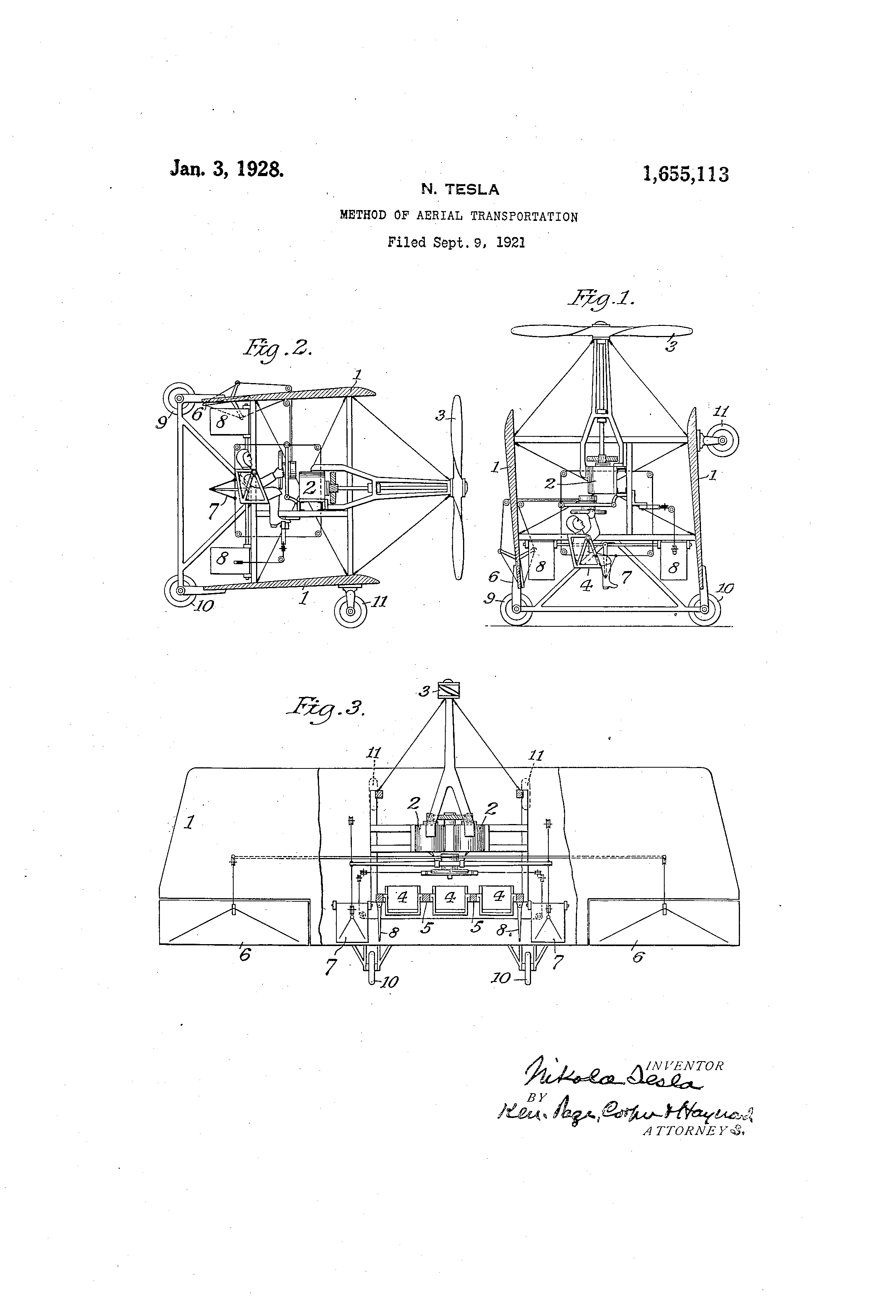
Images (1) US1655113A

Images (2) US1655114A
So, after briefly clarifying the issue of the alleged flying saucer and before we look at the images of the futuristic machines described by Tesla, we must first discuss the method and means he envisioned to make these devices fly. Much of this would only be possible with the “Tesla Transmitter Tower.”
By 1900, Tesla was already widely regarded as America’s leading electrical engineer, having dazzled the world with his groundbreaking inventions and his triumph over Thomas Edison in the “war of currents.”
It was then that he embarked on his most ambitious project to date: the Wardenclyffe transmission tower. Built between 1901 and 1905, the Wardenclyffe facility was based on yet another of Tesla’s revolutionary ideas.

Tesla planned to use the tower to achieve what the scientific community of the time considered impossible: a global wireless communication system. The tower would serve as the prototype of a network capable of transmitting music, news, stock market reports, secure military communications, and even facsimile images to the entire world, using the Earth itself as a conductor. It was an incredibly prescient attempt to create a telecommunications infrastructure similar to what the internet offers us today — but completely wireless.
But Tesla had an even more ambitious purpose in mind for the massive Wardenclyffe tower. He had already demonstrated that high-frequency signals could be transmitted without wired connections using his own “Tesla coil” transformers, which led to what would become his lifelong obsession: the wireless transmission of power.

Tesla’s dream was not only to revolutionize telecommunications by creating a wireless information transmission system, but also to establish a viable method to transfer electric currents around the globe by harnessing the Earth’s natural energy. He realized that the world around us is full of “free” energy and was determined to find a way to harness it for the benefit of humanity. Secret experiments Tesla conducted at his Colorado Springs laboratory in 1899 convinced him it was possible to transmit electric power through the upper atmosphere of the Earth. Wardenclyffe would be the prototype station for what he envisioned as a global network of towers, bringing his dream of worldwide wireless energy to life.
Tesla’s grand vision for Wardenclyffe ultimately exceeded his resources and the patience of his investors. The project ran into financial difficulties before completion, and in 1917, the unfinished tower was finally demolished and sold for scrap to pay Tesla’s debts. What was once a historic laboratory filled with Tesla’s fabulous inventions is now only a faint testament to his most ambitious idea.
Tesla Spoke About His Flying Machines in Many Interviews
Both in his autobiography and in numerous interviews, Tesla spoke about his futuristic machines. Below are some of Tesla’s quotes on the subject:
Excerpt from My Inventions by Nikola Tesla, Ch. VI, last page:
“As stated on a previous occasion, when I was a student in college, I conceived a flying machine quite unlike the present ones. The underlying principle was sound, but it could not be put into practice for lack of a primary motor of adequate activity. In recent years, I have successfully solved this problem and am now planning aerial machines devoid of sustaining planes, ailerons, propellers, and other external attachments that will be capable of immense speed and, very likely, will furnish powerful arguments for peace in the future. Such a machine, sustained and propelled entirely by reaction, is shown on page 108 and is supposed to be mechanically controlled or operated by wireless energy.
With the installation of proper plants, it will be possible to project a missile of this type through the air and drop it almost on the very spot designated, which may be thousands of miles away.”
Tesla explains how we can fly 8 miles high at 1,000 miles per hour – Reconstruction – July 1, 1919:
“It would also be able to remain absolutely stationary in the air. He described the motor as having 1,000 horsepower and weighing only 100 pounds. For comparison, one of the most powerful turbine engines in modern commercial aviation, a single GE90-115B, produces over 110,000 horsepower (twice the power of the Titanic’s engines) while weighing 18,260 lbs in dry condition.”
Tesla Promises Great Things – New York Sun – September 12, 1911:
“What about aerial navigation?” Dr. Tesla was asked. He thought for a moment or two and then answered with great deliberation:
“The application of this principle will give the world a flying machine unlike anything ever suggested before. It will have no wings, propellers, or other devices of any kind used so far. It will be small and compact, exceedingly fast, and, above all, perfectly safe in the greatest storm. It can be built in any size and can carry any weight desired.”
The Boy’s Book of New Inventions – Maule, Harry E. – The Tesla Turbine – 1912 – p. 268:
“I was a mechanical engineer before I became an electrical engineer, and besides, this principle was worked out during my search for the ideal motor for dirigibles, to be used in conjunction with my invention for the wireless transmission of electrical energy. For twenty years I have worked on the problem but have not given it up. When my plan is perfected, the present airplanes and dirigible balloons will vanish, and the dangerous sport of aviation, as we know it now with its hundreds of accidents and picturesque bird-men, will give way to safe, navigable aerostats, without wings or gas bags, but supported and propelled by mechanical means.
As I said before when we were speaking of the wireless transmission of energy, the mechanism will be a development of the principle on which my turbine is constructed.
It will be so tremendously powerful that it will create an actual rope of air above the great machine to hold it at any altitude the navigators choose, and also a rope of air in front or behind to send it forward or backward at almost any desired speed. When that day comes, dirigible travel will be as safe and prosaic as traveling by train today, and not very different, except that there will be no dirt and it will be much faster. Dining in New York, retiring in an Aero Pullman berth in a perfectly enclosed and furnished car, and waking up for breakfast in London.”
Tesla’s New Monarch of Machines – New York Herald – October 15, 1911:
“With a motor of a thousand horsepower weighing only a hundred pounds, imagine the possibilities in automobiles, locomotives, and steamships. In the space now occupied by the Lusitania’s engines, twenty-five times its 80,000 horsepower could be developed if sufficient boiler capacity could be provided to supply the necessary steam.”
“And it makes the airplane practical,” I suggested.
“Not the airplane, the flying machine,” replied Dr. Tesla. “It was in seeking the means to make the perfect flying machine that I developed this motor.
The airplane is fatally defective. It is only a toy – a sporting toy. It can never become commercially practical. It has fatal flaws. One of them is the fact that when it encounters a downward current of air, it is helpless. The so-called ‘air hole’ aviators speak of is simply a downward current, and unless the airplane is high enough above the ground to move laterally, it can do nothing but fall.”
“The flying machine of the future – my flying machine – will be heavier than air, but it will not be an airplane. It will have no wings. It will be substantial, solid, stable. You cannot have a stable airplane. The gyroscope can never be successfully applied to the airplane, for it would give a stability that would result in the machine being torn apart by the wind, just as the unprotected airplane on the ground is torn apart by a strong wind.
You could see it on the ground and never imagine it was a flying machine. Yet it will be able to move through the air at will in any direction with perfect safety, at speeds higher than have ever been attained, regardless of weather and immune to ‘air holes’ or downward currents. It will ascend in such currents if desired. It will be able to remain absolutely stationary in the air, even in wind, for long periods of time. Its lifting power will not depend on any delicate devices that the bird has to employ but on positive mechanical action.”
“Will you obtain stability through gyroscopes?” I asked.
“Through the gyroscopic action of my motor, aided by some devices I am not yet prepared to talk about,” he replied.
“Powerful air currents that can be diverted at will, if produced by sufficiently light and powerful motors and compressors, can lift a heavy body off the ground and propel it through the air,” I ventured, wondering if I had grasped the inventor’s secret.
Dr. Tesla smiled an inscrutable smile.
“All I have to say on that point is that my airship will have no gas bag, no wings, and no propellers,” he said. “It is the child of my dreams, the product of years of intense and painful toil and research. I will say no more about it. But whatever my airship may be, here at least is a motor that will do things no other motor has ever done, and that is something tangible.”

New Tesla Device Like Thor’s Screws — New York Times — December 8, 1915
“He is not yet ready to give details of the motor which, according to him, will render any military expedition against a country that possesses it futile. Suffice it to say that the destructive invention will travel through space at a speed of 300 miles per second, an unmanned dirigible, without propulsion motor or wings, sent by electricity to any desired point on the globe on its mission of destruction, if its operator so wishes.”
Tesla Explains How We Can Fly 8 Miles High at 1000 Miles per Hour — Reconstruction — July 1, 1919
“The idea is to fly at a great altitude, where the air is rarefied and thus requires much less energy to propel the machine.”
“At an altitude of eight miles, the oxygen depletion can be overcome both for the engine and for the aviator.”
“The application of wireless energy for aerial propulsion will eliminate a great many complications and waste, and it is hard to imagine that a more perfect means will ever be found to economically transport human beings over great distances. The power supply is virtually unlimited, as any number of power plants can be operated together, supplying energy to aircraft, just as trains running on tracks are now powered electrically via rails or wires.”
“Within a few feet, its explosive charge can be detonated. ‘This cannot be done with the current wireless plants, but with an adequate plant it can be done.’”
Tesla, 75 Years Old, Predicts New Energy Source — New York Times — July 5, 1931
“Mr. Tesla added that he devoted much time to experimenting with rocket-powered craft and designed several machines ‘with practical objectives in mind.’”
“A major development in this field can be confidently expected,” he said. “With such machines, it will be possible to reach speeds of nearly one mile per second through the rarefied medium above the stratosphere.”
“I foresee that such machines will be of tremendous importance in future international conflicts. I foresee that, in not too distant times, wars between various countries will continue without a single combatant crossing a border. At this very moment, it is possible to build such infernal machines that will carry any desired quantity of poisonous gases and explosives, launch them against a target thousands of kilometers away, and destroy an entire city.”
Collier Interview with Nikola Tesla — January 30, 1926
Interview conducted by John B. Kennedy and published in the January 30, 1926 edition.
“Perhaps the most valuable application of wireless energy is the propulsion of flying machines that will carry no fuel and will be free from any limitations of current airplanes and dirigibles. We will travel from New York to Europe in a few hours. International borders will be largely obliterated, and a great step will be taken toward the unification and harmonious existence of the various races inhabiting the globe. Wireless will not only enable energy supply to regions, however inaccessible, but will be politically effective by harmonizing international interests; it will create understanding instead of differences.”
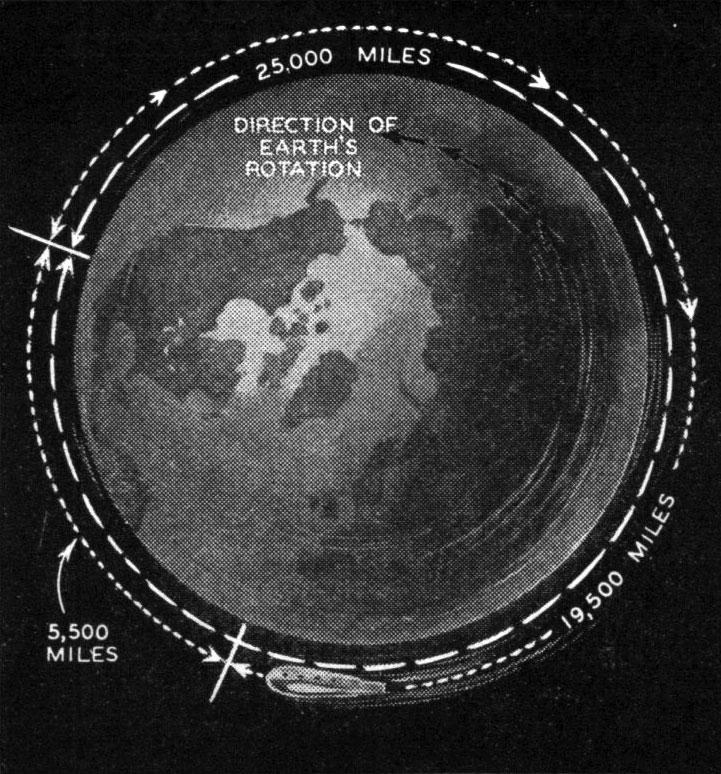
As we can see, Tesla envisioned many machines far ahead of his time. He was aware of their diverse applications and understood their military uses in wars, but also held a positive vision focused on humanitarian progress.
Other Tesla projects included land transportation powered by wireless electric energy, such as trains, cars, and even what appear to be boats.
Nikola Tesla was not merely an inventor; he was a visionary whose mind existed decades—perhaps centuries—ahead of his time. His concepts of wireless energy, vertical takeoff aircraft, and propulsion systems without wings or fuel were not just technical dreams, but bold blueprints for a future that humanity is only now beginning to touch. While many of his ideas were dismissed or misunderstood in his era, they stand today as a testament to an extraordinary intellect capable of imagining a world far beyond the limitations of early 20th-century technology. Tesla’s futuristic machines were not just inventions; they were glimpses into a destiny shaped by innovation, where science serves both progress and the betterment of mankind.
Here is the link to the Tesla Museum where you can click and learn more about his life.




